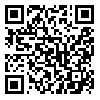Volume 28, Issue 3 (10-2022)
Back to this Issue |
Back to browse issues page
Download citation:
BibTeX | RIS | EndNote | Medlars | ProCite | Reference Manager | RefWorks
Send citation to:



BibTeX | RIS | EndNote | Medlars | ProCite | Reference Manager | RefWorks
Send citation to:
Nargesi Khoramabad N, Javadi A, Mohammadi R, Khazaee A, Amiri A, Moradi N et al . Assessment of the self-care level against COVID-19 and its related factors among hemodialysis patients. Journal of Hayat 2022; 28 (3) :310-321
URL: http://hayat.tums.ac.ir/article-1-4642-en.html
URL: http://hayat.tums.ac.ir/article-1-4642-en.html
Narges Nargesi Khoramabad * 

 1, Akbar Javadi2
1, Akbar Javadi2 

 , Rasool Mohammadi3
, Rasool Mohammadi3 

 , Atefe Khazaee4
, Atefe Khazaee4 

 , Akbar Amiri5
, Akbar Amiri5 

 , Nasrin Moradi4
, Nasrin Moradi4 

 , Ronak Garavand4
, Ronak Garavand4 




 1, Akbar Javadi2
1, Akbar Javadi2 

 , Rasool Mohammadi3
, Rasool Mohammadi3 

 , Atefe Khazaee4
, Atefe Khazaee4 

 , Akbar Amiri5
, Akbar Amiri5 

 , Nasrin Moradi4
, Nasrin Moradi4 

 , Ronak Garavand4
, Ronak Garavand4 


1- Social Determinants of Health Research Center, Poledokhtar School of Nursing, Lorestan University of Medical Sciences, Khorramabad, Iran , nargesi_k@yahoo.com
2- Social Determinants of Health Research Center, Poledokhtar School of Nursing, Lorestan University of Medical Sciences, Khorramabad, Iran
3- Nutritional Health Research Center, School of Health and Nutrition, Lorestan University of Medical Sciences, Khorramabad, Iran
4- Lorestan University of Medical Sciences, Khorramabad, Iran
5- Shohadaye Ashayer Hospital, Lorestan University of Medical Sciences, Khorramabad, Iran
2- Social Determinants of Health Research Center, Poledokhtar School of Nursing, Lorestan University of Medical Sciences, Khorramabad, Iran
3- Nutritional Health Research Center, School of Health and Nutrition, Lorestan University of Medical Sciences, Khorramabad, Iran
4- Lorestan University of Medical Sciences, Khorramabad, Iran
5- Shohadaye Ashayer Hospital, Lorestan University of Medical Sciences, Khorramabad, Iran
Abstract: (1399 Views)
Background & Aim: Today, COVID-19 has become a serious threat to global health. Due to their certain conditions, hemodialysis patients are more at risk than others. Therefore, self-care in these patients is more necessary. We aimed to assess the self-care of hemodialysis patients against COVID-19 disease and the factors influencing self-care.
Methods & Materials: In this cross-sectional study, 219 patients referred to the dialysis ward of selected public hospitals in Lorestan province, were selected by the census method and examined. Patients' information was collected by a demographic questionnaire and a researcher-made questionnaire on self-care against COVID-19. Data were analyzed using the SPSS software version 22, with the significance level of 0.05.
Results: The mean score of self-care against COVID-19 in patients was 186.33, and most patients had a good level of self-care. There was a significant relationship between the self-care score and place of residence (P<0.001), and comorbidity (P=0.044). Among the multiple sources of information, there was a significant difference in the self-care score between cyberspace (P=0.047), and family and relatives (P<0.001). Also, comorbidity, urban residence, and academic education level significantly predicted self-care.
Conclusion: According to the results of this study, developing proper training programs is suggested considering the factors influencing self-care. Also, capacities such as cyberspace and patients' families should be used to make the training more effective.
Methods & Materials: In this cross-sectional study, 219 patients referred to the dialysis ward of selected public hospitals in Lorestan province, were selected by the census method and examined. Patients' information was collected by a demographic questionnaire and a researcher-made questionnaire on self-care against COVID-19. Data were analyzed using the SPSS software version 22, with the significance level of 0.05.
Results: The mean score of self-care against COVID-19 in patients was 186.33, and most patients had a good level of self-care. There was a significant relationship between the self-care score and place of residence (P<0.001), and comorbidity (P=0.044). Among the multiple sources of information, there was a significant difference in the self-care score between cyberspace (P=0.047), and family and relatives (P<0.001). Also, comorbidity, urban residence, and academic education level significantly predicted self-care.
Conclusion: According to the results of this study, developing proper training programs is suggested considering the factors influencing self-care. Also, capacities such as cyberspace and patients' families should be used to make the training more effective.
Send email to the article author
| Rights and permissions | |
 |
This work is licensed under a Creative Commons Attribution-NonCommercial 4.0 International License. |




